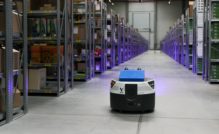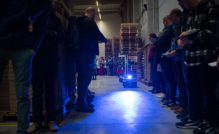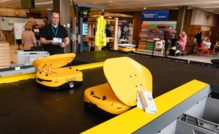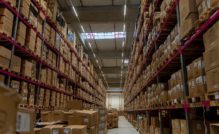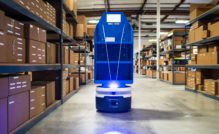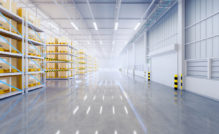Retailer in the Czech Republic in 2023
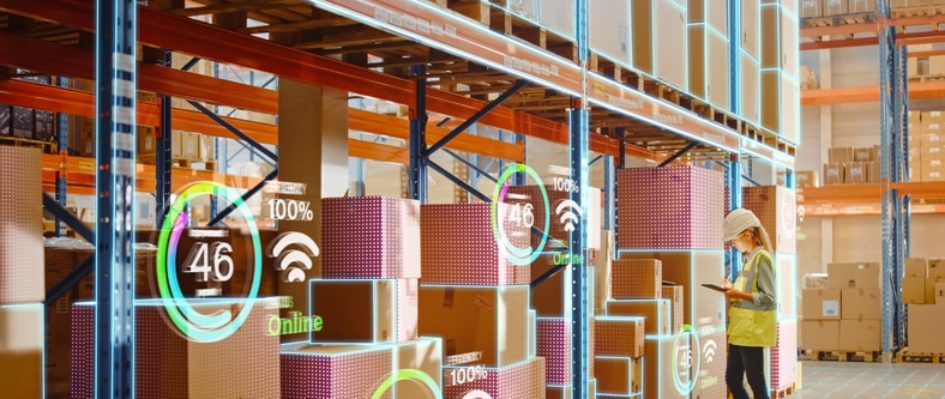
Obsah článku
What problems do retailers solve and what do they underestimate? What investments are they planning and who are the early adopters? What is the reality of stock shortages as retailer turnover falls? What technological innovations can we look forward to and does it make sense to consider them now that fully automated warehouses are emerging?
They answered all the questions for Sluno: Tibor Szekeres, expert in logistics processes and senior application specialist for warehouse systems, Radim Tvardek, head of Robotics and expert in technological innovations on the market, and Ondřej Kubesa, director of the sales and marketing team.
What is the theme in the retail world?
T: We work with customers mainly on process optimization and robotics with a fast return on investment. Some retailers, despite a 6-10% drop in turnover, are planning big investments. With the outflow of Czech customers abroad and their weakening purchasing power, we can expect a decline in the number of picked items in retailers’ warehouses. They are looking for solutions to optimize their processes so that they do not have to lay off.
R: Not only retailers but also logistics companies want to automate. The reasons are the lack of labor in the market, employee retention, expected growth and the ability to handle that growth at all.
A: Our entire portfolio of customers; retailers, logistics providers and manufacturers are addressing process optimizations that deliver long-term savings. Innovations in voice picking, picking for multiple stores at once, Pick by Light technology (processing orders and picking them when the appropriate shelf positions are lit) or Pick to Light (sorting items back into the correct shelf positions) are all topics of conversation. Savings, including fixed costs, are a major theme. That’s why almost everyone today is already thinking about robotics.
What are the retailers underestimating and what awaits them if they don’t start to address it?
R: Often underestimated is the preparation of an automation and robotics project, which can take many months to 1 year. On the other hand, companies that have already started automation and have something under their belt count on the fact that project preparation is the most important thing and everything will not be ready by the next day.
T: They constantly underestimate the lack of human resources. Even though we have seen in the days of covide that losing employees means losing business, they are hesitant to invest in automation. Yet we know that it is becoming increasingly expensive to recruit and train new employees. But there are also those who realise that even a long-standing, experienced employee can leave overnight. But they are all taking too small steps and only addressing the current shortcomings. Few think about what will happen in 10 years and are willing or able to invest in the future of their business today.
A: Some people still don’t realise that the question is not whether to start automation or robotics, but when to start and how to prepare for it. It’s inevitable. Those who already want robotics mostly underestimate the preparation. They don’t have an analysis of existing processes or warehouse mapping ready, which is essential for rapid robot implementation.
In 2022 there was a lot of talk about the lack of storage space, what does it look like this year?
T: Last year was extreme in this respect. This year, the situation with the lack of storage space could improve. I’ve even noticed the opposite trend. We are renting part of the warehouse to our own suppliers. This was caused by the drop in retail turnover and high energy prices. Retailers are not only figuring out how to optimize as cheaply as possible, but also where to make extra money to cover sudden costs. Those whose warehouse is managed by a WMS can also make money by buying goods ahead at better prices, because they can be sure they are using every space in their warehouse at 100%.
What technological innovations can retailers look forward to?
T: A very interesting new addition to the warehouse is Vision picking. A technology that uses augmented reality and smart glasses to display information directly into the warehouse worker’s field of vision. However, I don’t expect to see this technology expanded until 5 years from now. It was similar with voice picking. We first deployed this in 2005 and it’s only in the last two years that it’s become massively widespread among the major retailers.
A: All smart solutions are built on big data, which, despite advances in smart technology, remains untapped. A huge amount of data is collected, but only about 10% is analysed retrospectively. The rest either does not meet the appropriate criteria for evaluation or we do not know how to handle it. And it is this data that we expect to see a huge boom in future years, whether through smarter collection or more progressive processing through artificial intelligence. Some of our customers are already using AI to predict sales in promotions. But it’s still new and most customers are waiting for it to work for someone else. But those who don’t start reaping the benefits of AI now will then join the long waiting list.
R: Among robots, it’s the AMRs, or autonomous moving robots without any guidance lines on the floor. They evaluate the shortest path to the target and avoid all obstacles. The latest AMRs include pallet transport robots. As far as stores are concerned, these are definitely the automated ones. We’ve visited a few of them around Europe and the shopping experience is really enjoyable. But unfortunately it is not 100% accurate, even assuming an expensive technology solution with lots of cameras, scales and other devices. It is especially suited for supplementary sales at night with limitations e.g. in the number of customers in the store. Simple concepts based on self-service checkout and trust or the threat of detection by video recording stand a chance. To do this, the operating model and location of the store need to be well chosen. But it takes time; introducing self-service checkouts to stores on a larger scale also took about 10 years.

Who are the early adopters in the Czech Republic?
T: They are few, but they exist. The owners of these companies are visionaries who follow trends and want to have new technologies in their company. In the Czech Republic, it’s definitely Alza.cz or Zásilkovna, companies with big margins. They are certainly not big food retailers, they are rather cautious. There are a lot of innovations on the market, but it depends on when the biggest players from 3PL, automotive or e-commerce adopt them. The others just follow and copy them.
R: I agree, Alza.cz, Continental or Rohlík.cz who are introducing fully automated warehouses are definitely technological pioneers. E-commerce has an advantage over retail in that it handles a large number of small orders (relatively compared to brick-and-mortar stores), so automation becomes almost a necessity from a certain volume of sales onwards. Among food retailers I would mark Kaufland as a pioneer, which opened an automated warehouse in Olomouc.
Does it make sense to consider introducing new picking technologies when there is talk of complete warehouse automation?
T: We’re still not in a situation where robots can do the work of humans 100% 1:1. In food retailers, this is evident, because warehouse workers work with a variety of packaging, yet they must not destroy anything. Therefore, warehouse workers are more likely to use multiple technologies, carry them on or with them to make their work less demanding, and work with robots. It will still take a while for a robot to think like a human and be able to handle crisis situations (and for a retailer to be able to pay for it), but we’re close.
R: In an automated warehouse, goods are delivered to workstations where a warehouse worker or robot can work. A high degree of automation usually represents a significant investment. In contrast, the introduction of, for example, transport AMR robots can be gradual, without the need to modify existing warehouse facilities and with only a partial impact on established processes. What the transport robot replaces is primarily the human power required for transport. Whether it is walking or driving pallet trucks. The robot travels 30-50 km per day and replaces the workforce even in multi-shift operation. Robots will still need maintenance, so the nature of the required activities in the warehouses will change. Robots are also predictable, they will always come to work and will not hold forklift races between shelves at night.
What does the ideal warehouse look like?
T: Fully automated. I would start with the data exchange between the retailer and the supplier, which should be electronic only. It worked 15 years ago in Holland. They didn’t have to check anything at reception because the communication between the retailer and the supplier was set up so that everything was traceable and could be claimed. Nowadays it is slowly appearing in the Czech Republic. The entire business chain from the manufacturer, through the distributor to the customer must be as automated as possible, from start to finish. Everyone must learn to work together and communicate in the simplest way. That is where we should be heading.
R: Delivered by Sluno 😊 where we will find a mix of automation technology suppliers including robots that can be interconnected and relieve humans of all strenuous work. It will also change warehouse operations. Today, humans walk around the warehouse picking up goods. In the future, the goods themselves will circulate through the warehouse from person to person.
Q: In the Sun we say: “Let humans do the value-added work, leave the rest to robots”. Robots will gradually become a common part of all logistics processes and, of course, as demand grows, so will the overall demands. We are no longer content with simply transporting pallets, but require robots to be able to react flexibly to situations as they arise. Quality data and WMS are the basis for everything. So we are gradually approaching a situation where everyone should be asking the question: “What type of robot is right for our company?”.







